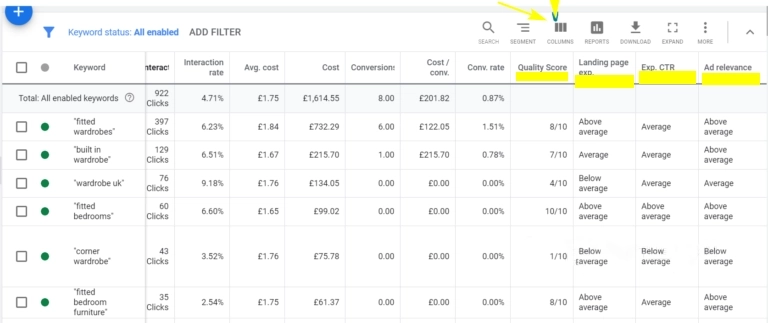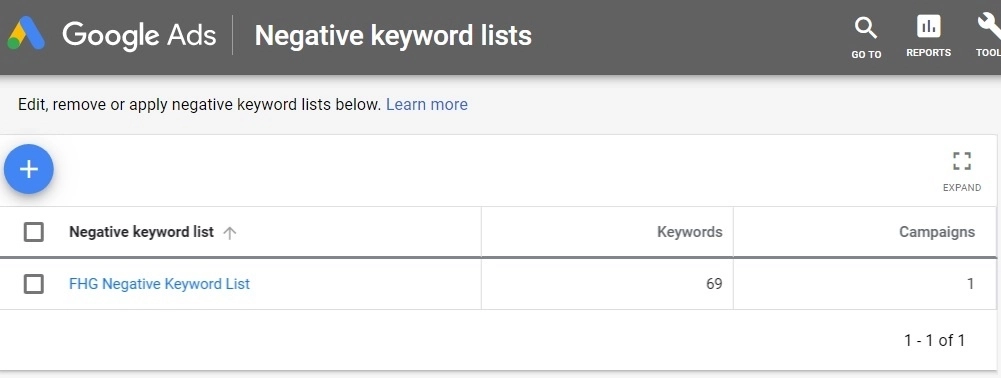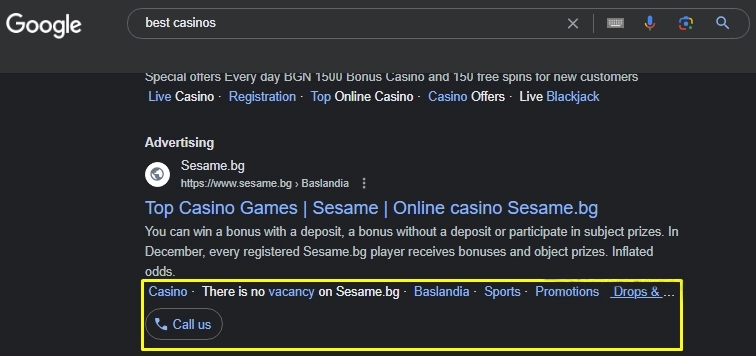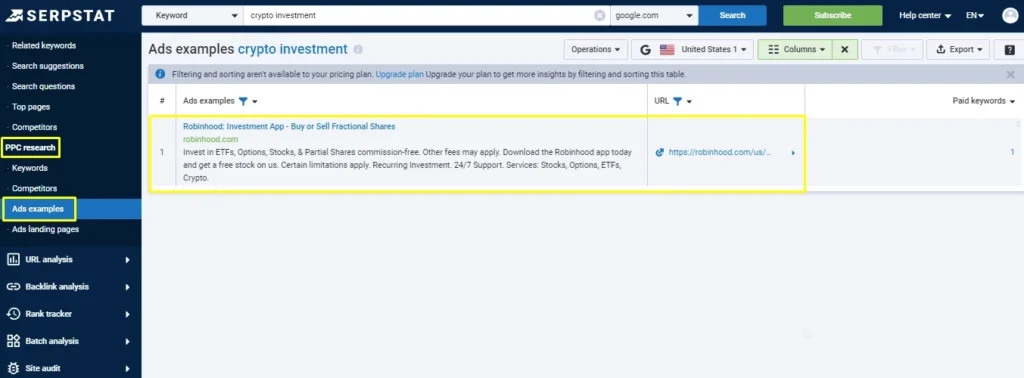The quality of advertising campaigns in Google Ads is directly influenced by the Click-Through Rate (CTR) of the ads. However, even experienced media buyers sometimes struggle to figure out how to boost CTR or how to create a high CR headline when working with a new offer. In this article, we will discuss effective methods for increasing ad CTR, which can help you to outperform competitors and to increase conversion rates.
- CTR Features in Google Ads
- What is Considered a Normal CTR in Google Search and Display Network?
- How to Increase CTR in Search and Display Ads?
- How to Increase CTR in Search Ads
- Tracking Metrics and Improving Keyword Quality
- Improving Ad Relevance
- Thorough Keyword Selection and Narrowing the Topic
- Adding Negative Keywords
- Adding Regional Variants of Ads
- Adding Ad Extensions
- Increasing Cost-Per-Click (CPC)
- How to Increase CTR in the Google Display Network (GDN)?
- Regular Promo Materials Updates
- Analyzing Competitors and Implementing Their Best Practices
- Ad Testing
- Conclusion
CTR Features in Google Ads
Before diving into the methods for increasing CTR, let’s briefly discuss the importance of this metric in Google Ads. Unlike other sources and places for running ads, in contextual and search ads, CTR directly affects the quality score of keywords in the eyes of Google’s algorithms. The higher the ad quality from Google’s perspective, the better its position among competitors for the same cost-per-click. This not only leads to better conversion rates and increased revenue from the campaign but also helps save on advertising budgets.
What is Considered a Normal CTR in Google Search and Display Network?
It’s important to note that the normal CTR in Google Ads can vary depending on the vertical and GEO. Click-through rates depend on the relevance of the ad text, its position in the search results, the presence of ad extensions, and other factors. In search ads, CTR can range from 5% to 35% depending on the niche and target country, excluding branded queries. As for the Display Network, the CTR of ads is significantly lower compared to search ads, and a standard CTR is considered to be around 0.5%—if a webmaster achieves a 1% rate, that’s above average.
How to Increase CTR in Search and Display Ads?
Below, we present current recommendations aimed at helping webmasters to improve the CTR of ads in Google’s search results as well as in the Google Display Network. But let’s take it step-by-step.
How to Increase CTR in Search Ads
Let’s start by examining ways to improve the click-through rate of ads in Google search results.
Tracking Metrics and Improving Keyword Quality
For search ads, the Quality Score is a very important metric. You can track the data used to determine this metric by adding additional columns at the keyword level in your Google Ads account. Key metrics that influence the Quality Score include:
- Expected CTR
- Landing Page Quality
- Ad Text Relevance

By adding the mentioned columns, webmasters can monitor positions in real-time, and if they see that the position is average or below average, they can optimize the text and keywords in the ad, or replace the landing page with a more relevant one. Changing a keyword and subsequently improving its quality can enhance the CTR not only of a specific ad but also of the entire ad group.
As a result, with high quality and better relevance, ads will occupy more favorable positions in the results compared to competitors’ ads with a lower Quality Score. Consequently, the CTR of the advertising campaign will improve without the webmaster needing to increase the bid in the auction.
Improving Ad Relevance
To achieve the highest relevance, each keyword should have its own dedicated ad. However, if the campaign is extensive, this can take a lot of time and effort. The simplest solution is to include highly relevant keywords in the headline and text using Dynamic Keyword Insertion (DKI). Additionally, the more relevant the ad is to the keyword, the lower the chances of rejection and campaign stoppage by Google’s algorithms.
Thorough Keyword Selection and Narrowing the Topic
In search advertising, low click-through rates often result from poorly selected keywords and phrases. To achieve a high CTR, keywords must closely match the target audience’s queries. Webmasters should pay attention to niche-specific terms and queries, as they generate more targeted leads compared to generic phrases.
If the CTR in a Google Ads search campaign is below 3-5%, it’s likely that the ads are being shown to a non-target audience due to improperly selected keywords, resulting in wasted budget. Therefore, it’s crucial to evaluate the relevance of keywords not only before launching the campaign but also during ad delivery to the audience. Additionally, apart from their own ads, media buyers need to analyze the approaches and keywords used by competitors continuously and integrate the most successful ones into their campaigns.
Adding Negative Keywords
Media buyers or PPC specialists should also focus on creating and updating lists of negative keywords to exclude certain terms from triggering ads. Regularly updating the negative keyword list helps filter out non-target audiences and avoid wasting the budget.

Adding Regional Variants of Ads
If a media buyer’s account is divided into separate campaigns for specific regions, it’s advisable to include the names of these GEOs or localities in the headlines and descriptions of the ads. This approach often has a positive impact on CTR, as users tend to respond better to personalized ads. For example, a resident of London is much more likely to click on an ad that mentions the name of their city.

Adding Ad Extensions
Another way to increase CTR in Google Ads is by adding additional ad extensions (such as price, promotions, contacts, images, etc.). Including extensions makes the ad more prominent compared to other search results by occupying more space with additional lines.

Increasing Cost-Per-Click (CPC)
A quick way to boost CTR is by increasing the click price. Before doing so, it’s recommended to check the average ad position, and if it’s too low, consider raising the CPC. If an ad generally ranks lower than the fourth position, it can become almost invisible to the audience.
How to Increase CTR in the Google Display Network (GDN)?
To increase CTR in GDN ads, in addition to improving the text content, you should also continuously optimize visual elements (videos, static images). The ad should be clear and user-friendly, capturing the user’s attention while matching the intent of the search query.

Regular Promo Materials Updates
Even the most effective promo materials will eventually burn out. An ad may become repetitive for the audience and stop generating conversions. Therefore, it’s crucial for media buyers to regularly update and test new approaches and ad elements. Deleting the ad is not necessary; instead, it can be modified by testing different color schemes, graphic combinations, and text variations.
Analyzing Competitors and Implementing Their Best Practices
If a webmaster, after thoroughly preparing the campaign and launching ads, notices that the CTR is very low, it may indicate that their ads are less noticeable or appealing to the target audience compared to competitors’ ads. Analyzing competitors and adopting their best practices can help improve performance.

In such cases, it’s necessary to study and analyze as many competitor ads as possible to understand their approach to presenting information, key focus points, and triggers. However, blindly copying their text and visual elements is not recommended. It’s much more effective to identify the weaknesses in your competitors’ ads, highlight the unique selling points (USPs) of your offer, and emphasize these in your updated ads.
Additionally, incorporating calls-to-action (CTAs) or trigger words like “Sale”, “Free”, “Gift”, etc., can further improve CTR.
Ad Testing
One of the main advantages of Google Ads is the possibility to test hypotheses, keywords, and advertising approaches continuously. Such tests help increase CTR based on the results and conclusions drawn. Furthermore, webmasters can entrust testing to the advertising platform itself by creating responsive ads.
Conclusion
The CTR of Google Ads plays a crucial role as it directly affects the cost and frequency of ad impressions. The better the click-through rate, the more potential leads Google will drive to the landing page without increasing the cost-per-click.
To improve CTR, webmasters or media buyers should carefully refine keyword and negative keyword lists, ensuring their relevance to the offer and landing page content. They should also use marketing tactics like highly targeted ads, geo-targeting, and adding ad extensions.
No successful campaign is complete without constant competitor analysis, regular creative updates, and continuous testing of new hypotheses.
If you are interested in an alternative to Google Ads platform, we recommend reading our article about Display & Video 360 advertising network which also has a lot of advertising tools.











